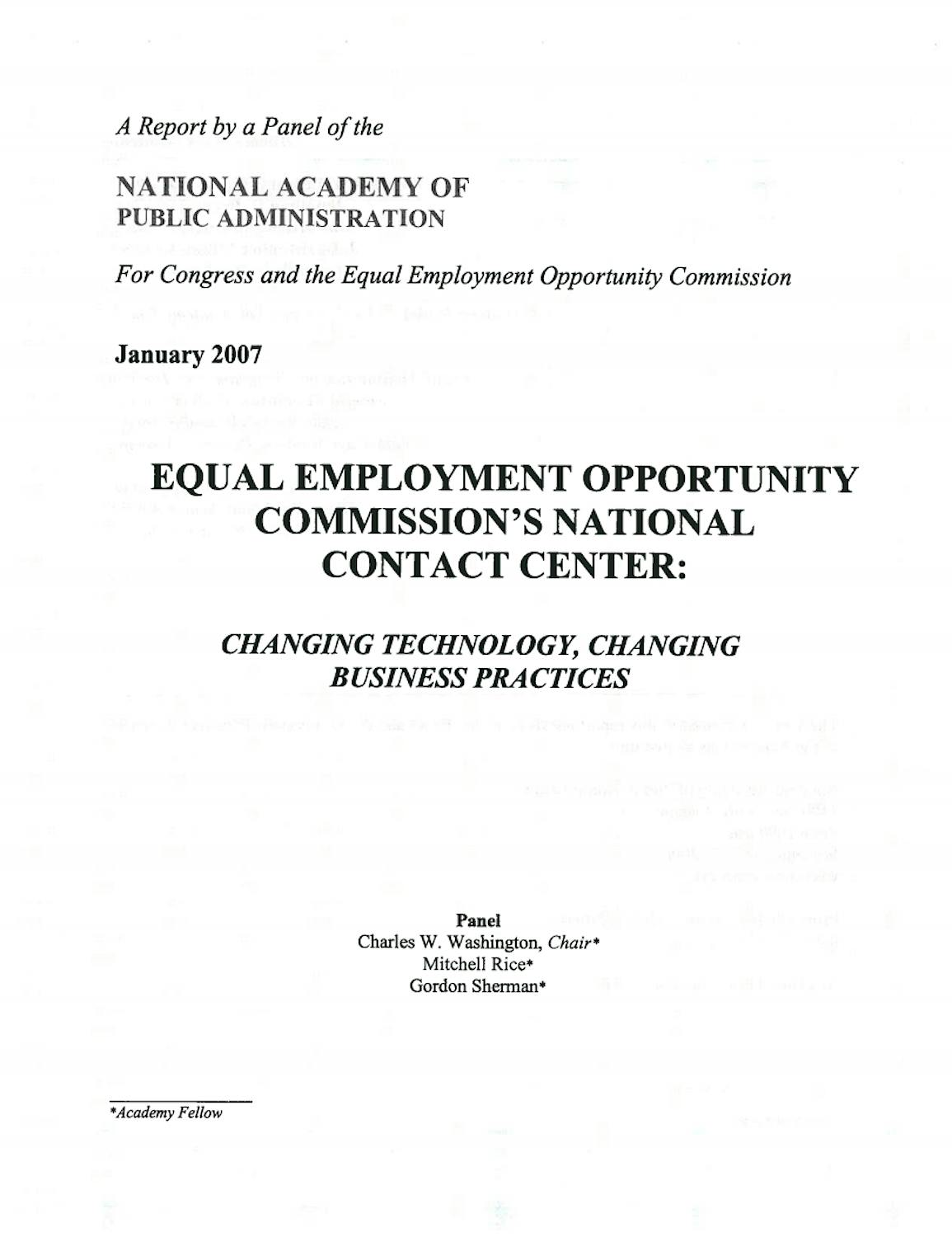
Equal Employment Opportunity Commission's National Contact Center: Changing Technology, Changing Business Practices
The Equal Employment Opportunity Commission (EEOC) requested assistance from the National Academy of Public Administration to develop a framework for optimizing its organizational structure and developing a strategic human capital plan.
Click the button below to view the View Study Report.
View ReportKey Findings
The Panel noted that while many of the problems identified int the OIG study could be expected by any agency attempting to put into practice a fundamentally different approach to a key business process, a number of the deficiencies resulted from shortcomings in implementation and follow-up. While the intital planning and implementation efforts were successful in getting NCC started, it is clear that several things could have been done better.
- The Agency could have made a better business case for NCC. The efforts to apprise stakeholders, especially employees, needed more focus and attention.
- The Agency focus on what was actually taking place after NCC got off the ground needed more attention and resources.
- When problems were identified in the early stages, remedial actions were not aggressively prusued.
These issues were compounded by the Agency's inexperience with call center operations as well as a lack of baseline metrics, defined goals and benchmarks for the various initiatives.
Recommendations
One of the three primary recommendations offered in the Academy's report urged EEOC to implement a toll-free National Contact Center (NCC) staffed by trained individuals to take charges (complaints of alleged discrimination) over the phone and respond to questions about EEOC's mission and services. A second study, conducted by EEOC, also recommended the establishment of a call center and the outsourcing of the center's start-up.
- While the initial planning and implementation efforts were successful in getting the NCC started, it is clear that several things could have been done better:
- The Agency could have made a better business case for the NCC. The efforts to apprise stakeholders, especially employees, needed more focus and attention.
- The Agency focus on what was actually taking place after the NCC got off the ground needed more attention and resources.
- When problems were identified in the early stages, remedial actions were not aggressively pursued.